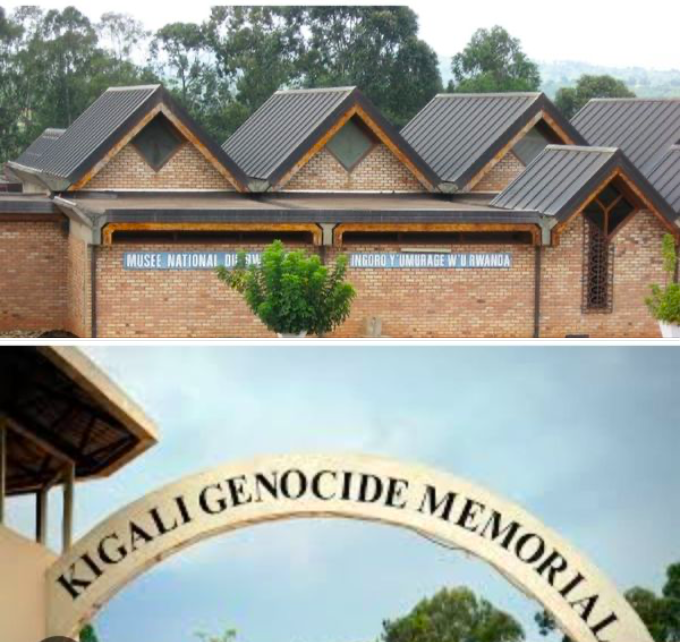By Valentin Akayezu
It’s not surprising when I see the Rwandan Patriotic Front (RPF) vehemently claiming that the Rwandan education system under previous governments was structured to instill hatred against Tutsis. This narrative, often propagated at home (as per RPF’s theory of ‘ideology at the hearth’), asserts that a Hutu child was indoctrinated from birth to despise Tutsis. To witness this accusation, one could look at Tito Rutaremara’s vitriolic writings on his X website, formerly known as Twitter. Furthermore, the RPF alleges that this hatred was a part of school curricula. However, there is a striking lack of evidence or specific curriculum materials to substantiate these claims of systematic anti-Tutsi teachings in schools.
I start with ‘not surprising’ because the RPF promotes this hatred narrative to perpetuate division among Rwandans (Hutus and Tutsis), which serves its power consolidation through a ‘divide and rule’ strategy.
The real surprise is seeing a Rwandan, who grew up and was educated in Rwanda, perhaps even holding a higher degree, who went through this education system and worked in government or private sectors, audaciously claiming that schools and families were breeding grounds for anti-Tutsi sentiment!
Let’s question this: If such hatred were institutionally taught, how many would have fled Rwanda due to this oppressive education? How many raised these issues and paid the price for it? Could it be said that Rwanda wasn’t free? Did publications like ‘Le Dialogue’, which reported on societal issues in French, ever mention this? We know of writings titled “Isiha Rusahuzi” discussing the country’s mismanagement, which continued to be published without censorship. Why then, wasn’t this significant issue, allegedly affecting many, ever brought to light?
Some argue that Tutsis were denied educational opportunities, which were instead given to Hutus (ironically, some of these claims come from individuals who themselves were educated in this system). They say this led to the establishment of private schools that were open to Tutsis. However, these private schools, licensed by the supposedly discriminatory government, apparently didn’t have a separate curriculum promoting hatred. The list of RPF’s political discourse falsehoods is endless.
I return to the images accompanying this article. The first image is of the Rwanda National Museum (Musée Nationale du Rwanda) as it was during its inauguration in September 1989 by Belgian Prime Minister Wilfried Martens. I vividly remember a school trip to this museum, where our education primarily focused on the heroic history of Rwandan kings and their territorial expansions. Notably, there was no display of the Nyiginya monarchy’s alleged discrimination against Hutus. This omission challenges the RPF’s claim that the previous governments thrived on anti-Tutsi sentiment.
Had this hatred truly existed, it would have been evident in the country’s historical displays. The RPF’s accusation against previous governments is a projection of its own characteristics. These governments did not erase evidence of Tutsi rule; instead, they highlighted the Nyiginya dynasty’s achievements without focusing on any alleged cruelties.
The second image is of the Gisozi Memorial. Recall when Sepp Blatter, competing for his second FIFA mandate against Issa Hayatou of CAF, visited Rwanda and pledged funds for this memorial. Surprisingly, General Ceaser Kayizari of FERWAFA supported Blatter over the African candidate, contradicting the pan-Africanist stance Rwanda should have adopted. This decision was controversial and did not conclude well due to subsequent revelations of corruption within FIFA.
Regarding the Gisozi Memorial, it was initially intended to truthfully reflect the atrocities committed against the Tutsi part of the Rwandan population. However, the RPF saw an opportunity to use it for propagating distorted historical narratives, aiming to vilify Hutus and perpetuate the notion of RPF as the country’s savior. During my 2016 visit to the Gisozi and Bisesero memorials, I observed how these sites have become tools for anti-Hutu propaganda, portraying all previous Hutu-led governments as calamities for Rwanda. These memorials, rather than being places of honest reflection, are used to obliterate the history and contributions of Hutus, often depicting them solely as perpetrators of violence.
In conclusion, the question arises: isn’t the hatred that the FPR tries to attribute to previous regimes actually a reflection of its own practices? It’s crucial to acknowledge that while there were certainly flaws in the governance before FPR, these do not justify the distortion of history and the creation of a narrative that fosters division and hatred.
PS: This is not to deny the existence of past governance errors that might have impacted people’s lives, but to seek a balanced and truthful representation of history for all Rwandans.





























































